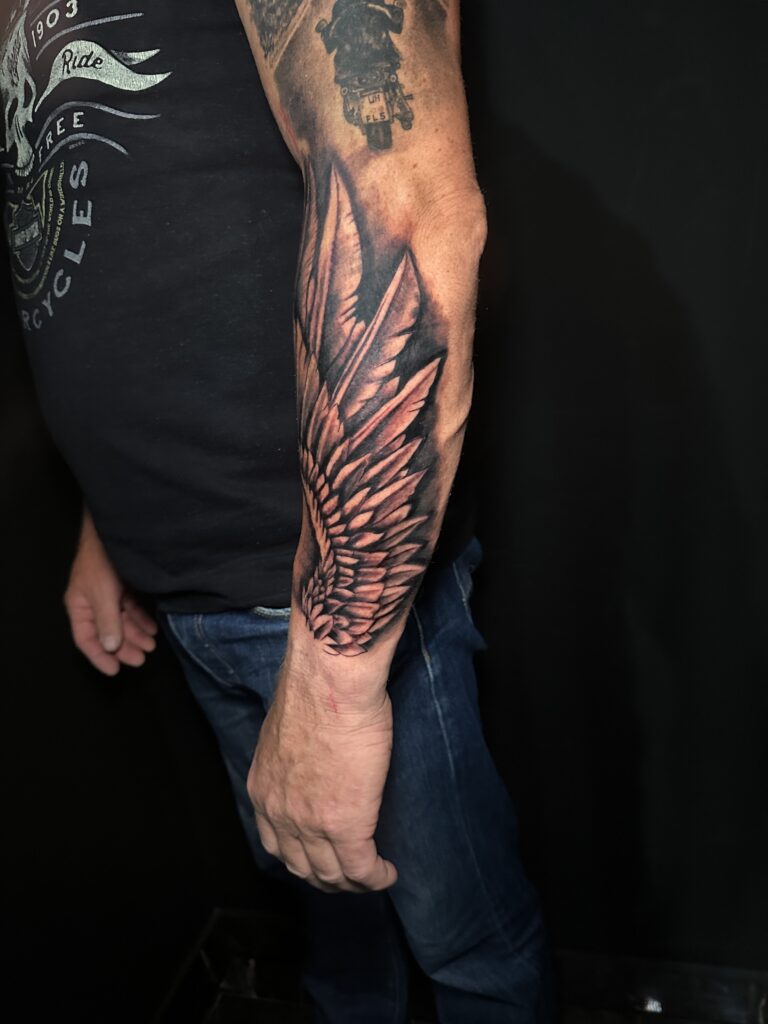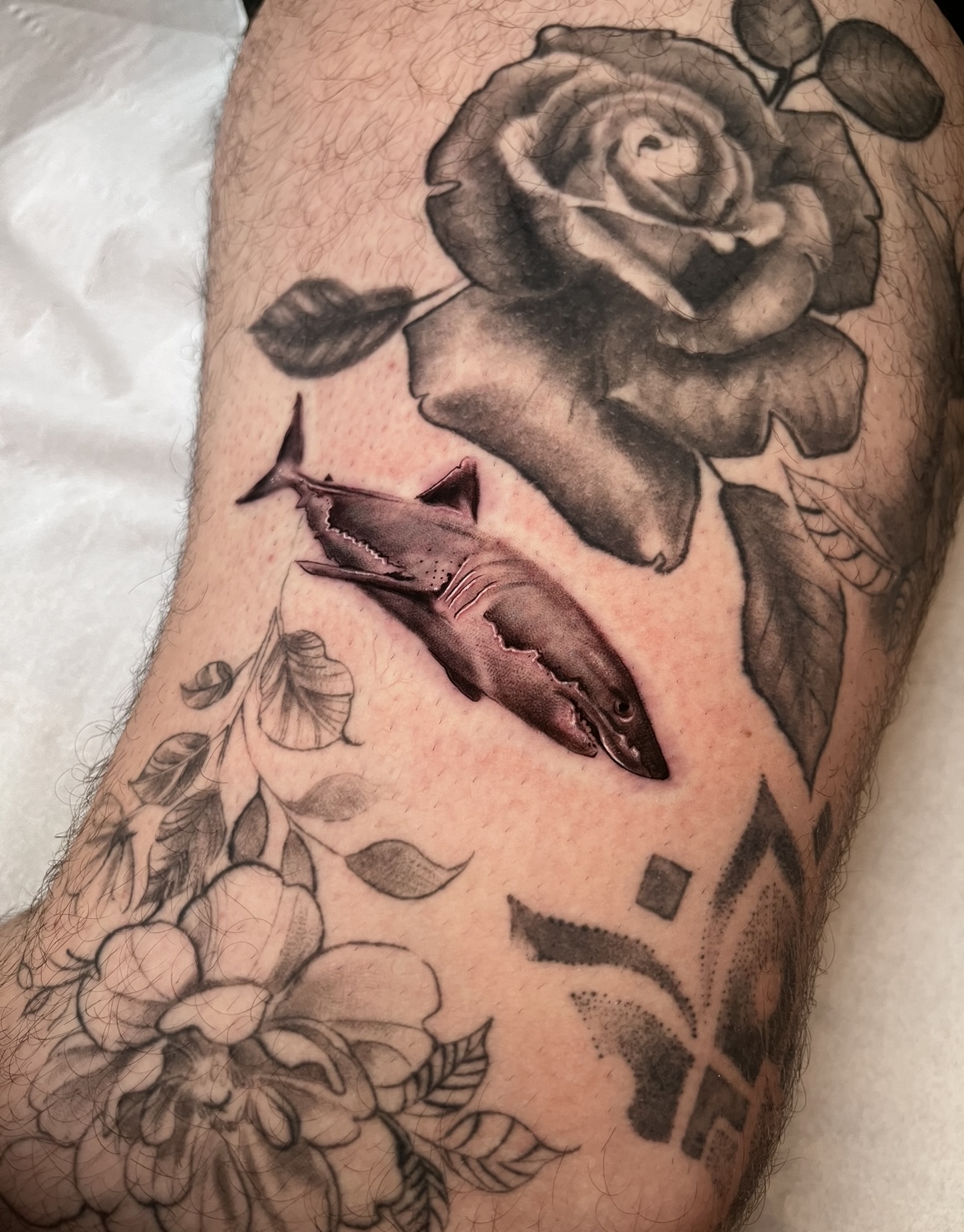The First 24 Hours

1. Leave the Bandage On to start the tattoo aftercare
Your tattoo artist will cover your new tattoo with a bandage or plastic wrap. Leave this on for at least a few hours, to avoid any dirt or dust in the open pores. This initial covering protects your tattoo from bacteria and prevents it from rubbing against clothing as well.
2. Gently Wash the Tattoo
After removing the bandage, wash your tattoo with lukewarm water and a mild, fragrance-free soap. Use your hands, not a washcloth or sponge, to avoid irritation. Pat dry with a clean soft towel, I like using Plenty kitchen towel.
3. Moisturise very little, but avoid Petroleum jelly
Use a thin layer of a recommended tattoo ointment, such as Aquaphor or A&D ointment. Avoid petroleum jelly as it can clog pores. Your tattoo artist will likely recommend a specific product.
The First Week: Establishing Good Habits on the tattoo aftercare process
1. Wash and Moisturise Regularly
Wash your tattoo gently twice a day and apply a fragrance-free moisturizer after each wash. I Like using Extra Virgin coconut oil, as some recent research have found it to be an antimicrobial agent, and it also helps by accelerating the healing process.
2. Avoid Soaking or sweating in excess
Keep your tattoo out of pools, hot tubs, and baths, skateparks and gyms for few weeks. Long exposure to water can cause the ink to fade and increase the risk of infection. Quick showers are fine, but avoid direct water pressure on the tattooed area.
3. Wear Loose, Clean Clothing to ease the tattoo aftercare process
Choose loose-fitting clothes made of breathable fabrics to prevent friction and irritation. Clean clothing helps avoid infection during the healing process.
4. Stay Out of the Sun and avoid excessive sports
Protect your tattoo from direct sunlight. UV rays can fade the ink and prolong the healing process. If you need to be outside, cover the tattoo with clothing.


Weeks 2 to 4: Continued Care

1. Expect Peeling and Itching
Your tattoo will likely start to peel and itch as it heals. This is normal. Do not pick or scratch your tattoo. Apply a thin layer of moisturizer to alleviate itching.
2. Switch to a Lighter Moisturiser
Once your tattoo starts peeling, switch to a lighter, fragrance-free lotion. Continue moisturizing the area to keep it hydrated and aid the healing process.
3. Monitor for Signs of Infection
Watch for signs of infection, such as excessive redness, swelling, pus, or a fever. If you notice any of these symptoms, contact a healthcare professional immediately.
Long-Term Aftercare: Maintaining Your Tattoo
1. Hydrate Your Skin
Even after your tattoo has healed, keep your skin hydrated to maintain its vibrancy. Use a high-quality, fragrance-free lotion daily.
2. Protect from the Sun
Continue to protect your tattoo from the sun. Apply a high-SPF sunscreen to your tattoo whenever it’s exposed to the sun. This will prevent fading and keep the colors vibrant.
3. Stay Healthy
Your skin reflects your overall health. Eat a balanced diet, stay hydrated, and maintain a healthy lifestyle to keep your skin, and your tattoo, looking its best.
4. Avoid Harsh Chemicals
Be mindful of the products you use on your skin. Harsh chemicals found in some soaps, lotions, and perfumes can affect the appearance of your tattoo.

if you have any concerns or questions, your tattoo artist is always great resource for personaliSed advice about your tattoo.

